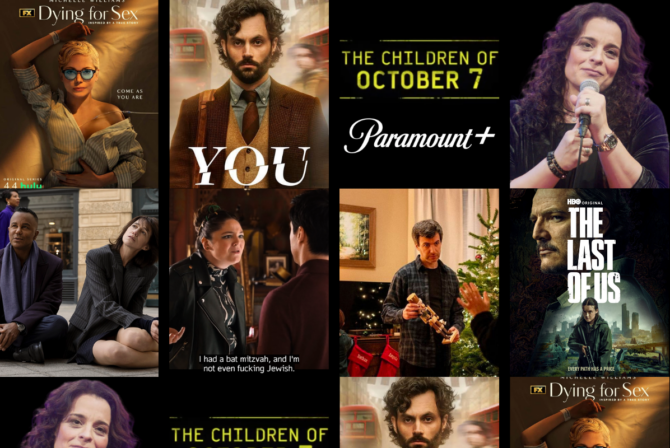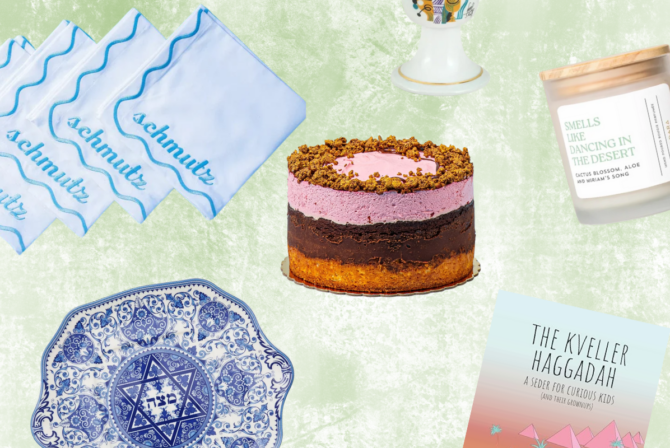It was two days before our visit to family in Alabama. Feeling hopeful, I Googled “Huntsville kosher.” Nothing useful came up. I tried “Jewish Huntsville.” Not much better. Finally, with “Huntsville synagogue,” a Conservative shul and a Chabad center surfaced, neither of which had weekday services or kosher food. I sighed and went to pack a few boxes of granola bars.
Figuring out how to “do Jewish” in different locations is always on my to-do list before a trip, but some cities make that job easier than others. We hadn’t even left and I was already feeling disconnected from our usual community.
Even my children thought to do some advance scouting of the Jewish landscape. They asked me if the family member we were visiting was Jewish (yes) and if he kept kosher (no). I explained that the place where we were staying had a kitchen and that we’d be arranging for our own food, which would all be kosher. That seemed to satisfy them.
When we travel, some aspects of our Judaism are easy to bring with us. Packing our bags later that day, I put in the usual items: a tallit (prayer shawl), tefillin (phylacteries), and a siddur (prayer book). We would be home before Saturday, so the travel Shabbat and Havdalah set we had assembled could stay on the shelf. (It consists of a zippered cosmetics case containing tea lights, matches, a Havdalah candle, a tiny bag of spices, and a photocopy of the prayers. We buy grape juice and challah, or in a pinch, bread or matzah in the local supermarket.)
More complicated was figuring out how to squeeze in morning prayers before a 6 a.m. flight. More Googling confirmed that the hour when we were leaving the house was still too dark for Shacharit (morning prayers). As a result, my children–and any other travelers who were at the Rochester airport at 4:30 a.m. that day–have now seen a parent praying in tallit and tefillin in a public space. Afterwards, those items went into our checked luggage; it’s always easier to get through security without anything that looks unusual. One time the transportation security agents made us pull out the tefillin bag from our carry on, thinking the coiled leather straps were wires. That was years ago, though. More often, the TSA agents require a pat down of our kippah or hat-covered heads and wave us along. This time they didn’t even bother.
On the airplane, my husband and I each pulled out our siddurim and quietly recited tefilat haderech (the traveler’s prayer). We checked on the tiny snack bags for kosher symbols (nuts and pretzels, yes, cookies, no) and tried to keep our kids from kicking the seats in front of them.
Many parts of our trip had nothing to do with being Jewish. We visited train, rocket and science museums (my kids particularly recommend SciQuest), swam in the pool every day, ate ice cream, and read books. Wait, maybe I spoke too soon. It was thanks to Ben & Jerry’s that we were able to have a kosher treat since astronaut ice cream is not currently certified. And who would have expected that I’d find “Matzah Ball: A Passover Story” at a used bookstore in Huntsville? I can’t imagine how this Kar-Ben classic hasn’t been rereleased through PJ Library yet.
Meals turned out fine. We kashered the microwave and a burner so we were able to cook with our kosher pot. The supermarket provided us with certified items such as Morningstar Farms veggie burgers, yogurt, hummus, cereal, and string cheese (hooray for PollyO being kosher!), plus all the fruits and veggies we wanted. The kids were excited to see us purchase chocolate milk, Smucker’s Uncrustables sandwiches, and even old-time candy sticks for them at the museums. We’re lucky to live in a time when so many packaged foods are marked as kosher.
So we “did Jewish” all along, but I couldn’t help feeling a little lonely. We weren’t the only Jews in town, but sometimes I felt that way.
On our last day of the trip, I took an hour for myself and went to the art museum, where I started by wandering through a visiting exhibit full of large, colorful paintings. I was still thinking about them as I walked into the next gallery, when a black-and-white photograph caught my eye and made me stop abruptly. I was facing the large window of a butcher shop with Hebrew letters describing its status. The image, by Don Eddy, was called “Rosen Bros. Strictly Kosher Meats.”
For a couple of minutes, I just looked at the photograph, standing there smiling at this tiny bit of my life, of my community. How did the Huntsville Museum of Art happen to acquire this particular image? Was it chosen because it felt exotic, or could it be that a curator with Jewish roots picked it because it felt familiar? Either way, seeing it was wonderful.
We were no longer the only ones “doing Jewish” in Huntsville.
Like this post? Get the best of Kveller delivered straight to your inbox.







